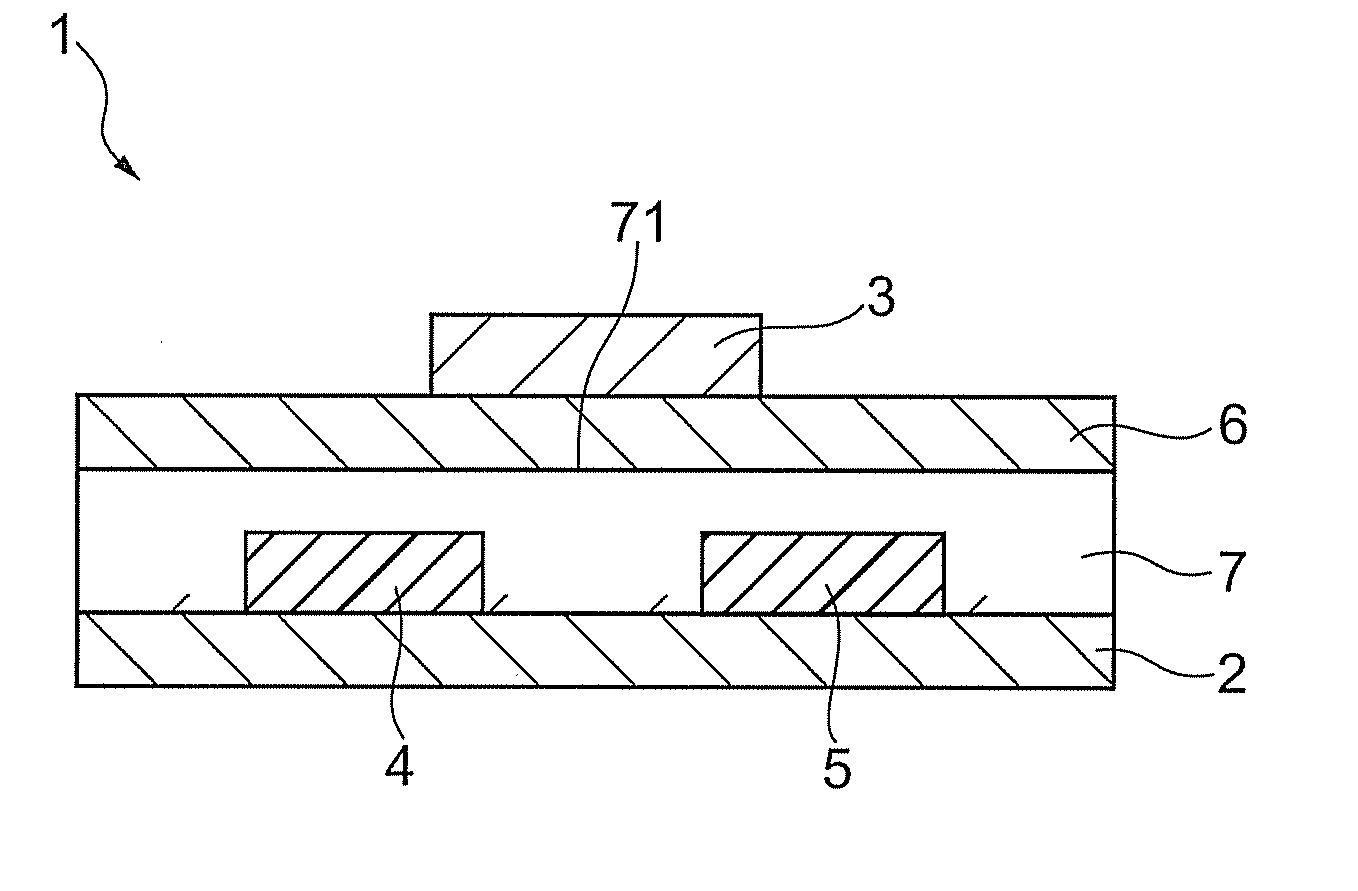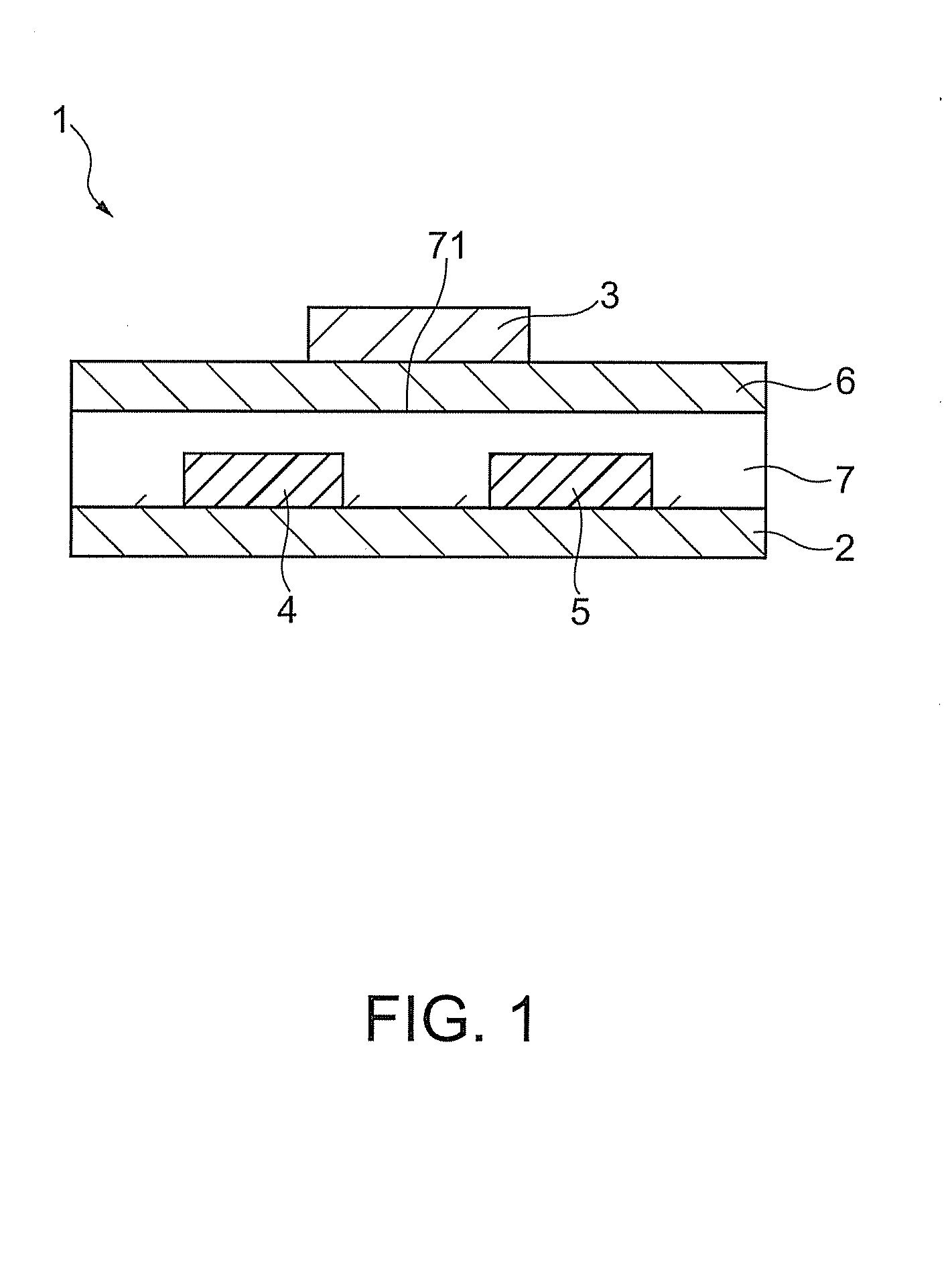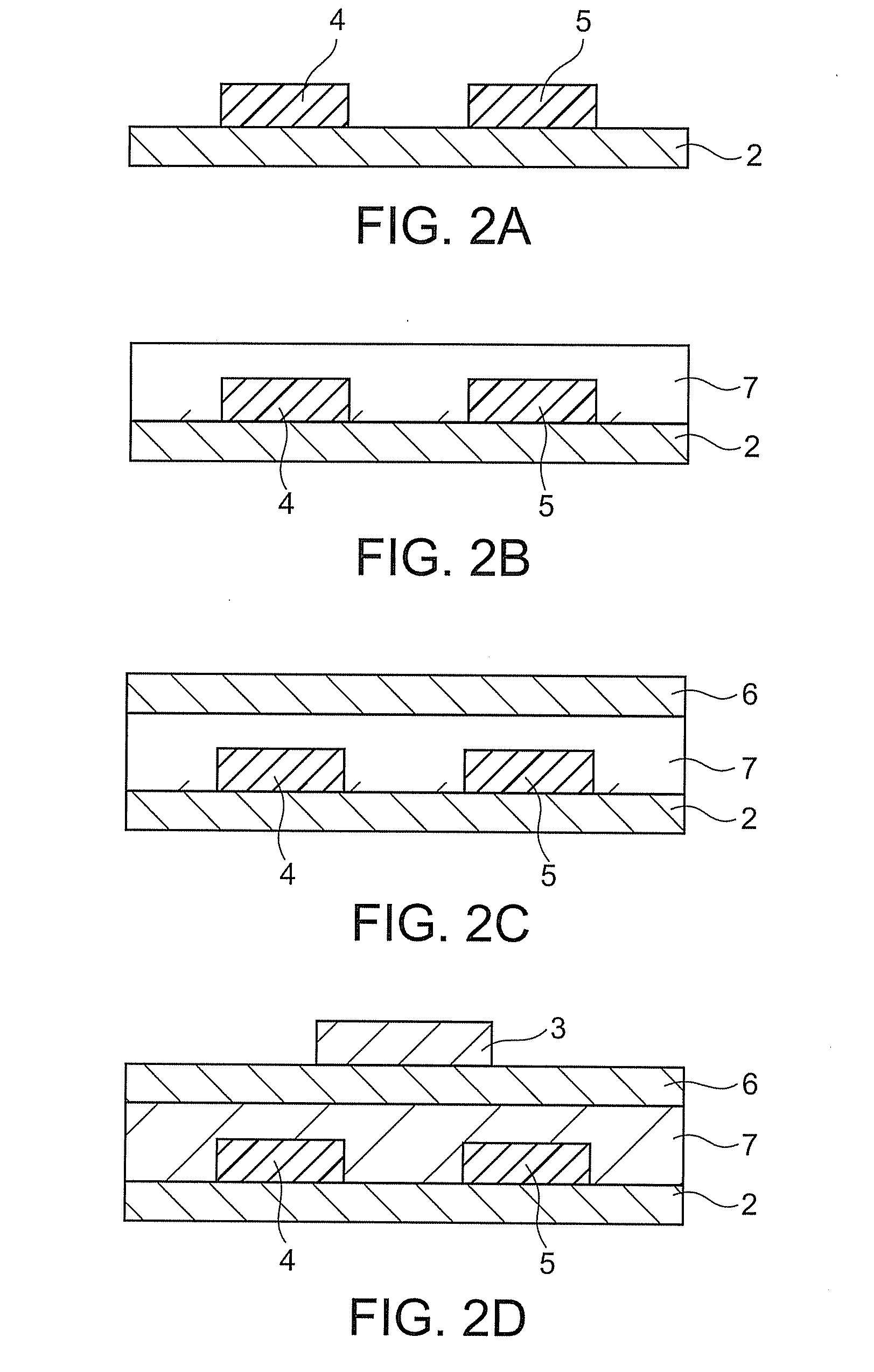Method for manufacturing semiconductor device, semiconductor device, semiconductor circuit, electro-optical device, and electronic apparatus
a manufacturing method and semiconductor technology, applied in semiconductor devices, solid-state devices, thermoelectric devices, etc., can solve the problems of deterioration of tft characteristics in the atmosphere, gate insulation layer becomes difficult to dissolve in solvent, gate insulation layer cannot be formed, etc., to achieve high performance, semiconductor circuits high performance, and superior semiconductor characteristics
- Summary
- Abstract
- Description
- Claims
- Application Information
AI Technical Summary
Benefits of technology
Problems solved by technology
Method used
Image
Examples
first embodiment
[0060]First, a semiconductor device according to a first embodiment will be described.
[0061]FIG. 1 is a longitudinal sectional view schematically showing a semiconductor device of the first embodiment, while FIGS. 2A through 2D are diagrams (longitudinal sectional views) for explaining a method for manufacturing the semiconductor device shown in FIG. 1.
[0062]In the following description, the upper side in FIGS. 1 through 2D is described as “top”, while the lower side is described as “bottom”.
[0063]In a semiconductor device 1 shown in FIG. 1, a source electrode 4 and a drain electrode 5 are formed on a top surface of a substrate 2 so as to be apart from each other, and an organic semiconductor layer 7 is formed so as to cover them. On a top surface of the organic semiconductor layer 7, a gate insulation layer 6 is formed. Further, a gate electrode 3 is formed on a top surface of the gate insulation layer 6. That is, the semiconductor device 1 shown in FIG. 1 has a top gate bottom con...
second embodiment
[0161]Next, a second embodiment of the semiconductor device will be described.
[0162]FIG. 3 is a sectional view schematically showing a semiconductor device of the second embodiment, while FIGS. 4A through 4D are diagrams (longitudinal sectional views) for explaining a method for manufacturing the semiconductor device shown in FIG. 3.
[0163]In the following description, the upper side in FIGS. 3 through 4D is described as “top”, while the lower side is described as “bottom”.
[0164]The following description of the second embodiment of the semiconductor device focuses primarily on differences from the first embodiment, and similar points will be omitted.
[0165]The semiconductor device 1 of the second embodiment is different in the overall configuration from the semiconductor device 1 of the first embodiment and is the same in other sections.
[0166]In the semiconductor device 1 shown in FIG. 3, the gate electrode 3 is formed on the top surface of the substrate 2. On the substrate 2, the gat...
example 1
[0229][1] Source Electrode and Drain Electrode Forming Step
[0230]First, a plastic substrate was prepared and cleaned with ethanol so as to degrease its surface.
[0231]A source electrode and a drain electrode were formed on the plastic substrate by depositing gold. After the source electrode and the drain electrode were formed, the plastic substrate having the source electrode and the drain electrode formed thereon was immersed in isopropyl alcohol and subjected to an ultrasonic cleaning for 5 minutes. After the cleaning, the plastic substrate was dried at 60 degrees Celsius for 10 minutes.
[0232][2] Organic Semiconductor Layer Forming Step
[0233]Next, fluorene-bithiophene copolymer (American Dye Source-made F8T2, hereinafter, abbreviated as “F8T2”) was dissolved in toluene so as to prepare a 0.5 wt % F8T2 solution. The F8T2 solution was supplied on the source electrode, the drain electrode, and the substrate by spin casting so as to form a F8T2 film having a thickness of 20 nm as a lay...
PUM
| Property | Measurement | Unit |
|---|---|---|
| water absorption | aaaaa | aaaaa |
| boiling point | aaaaa | aaaaa |
| thickness | aaaaa | aaaaa |
Abstract
Description
Claims
Application Information
 Login to View More
Login to View More - R&D
- Intellectual Property
- Life Sciences
- Materials
- Tech Scout
- Unparalleled Data Quality
- Higher Quality Content
- 60% Fewer Hallucinations
Browse by: Latest US Patents, China's latest patents, Technical Efficacy Thesaurus, Application Domain, Technology Topic, Popular Technical Reports.
© 2025 PatSnap. All rights reserved.Legal|Privacy policy|Modern Slavery Act Transparency Statement|Sitemap|About US| Contact US: help@patsnap.com



